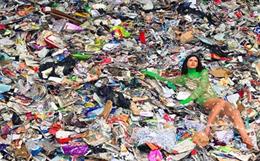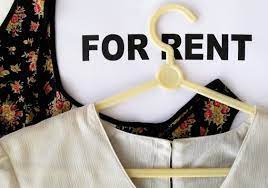It’s official. The clothing and textile industry is depleting non-renewable resources, emitting vast quantities of greenhouse gases and using massive quantities of energy, chemicals and water. Our fashion industry is one of the major polluting industries in the world. Talk about the production and distribution of the crops, fibres, and garments used in fashion all contribute more to air pollution, including water, and soil pollution. Many of those fibres are polyester, 2 to 3 times more carbon emission than cotton. Fashion production makes up 10% of humanity’s carbon emissions, dries up water sources, and pollutes rivers and streams. Also, 85% of all textiles go to the dump each year. And washing some types of clothes sends thousands of bits of plastic into the ocean.
Letters have published a study that shows purchasing new clothes is more sustainable than renting or dry cleaning existing ones. The study looked at five different ways to own and dispose of clothing and found packaging and transportation associated with renting clothes make it the least environmentally friendly option. The rental clothing market will be worth GBP2.3bn (US$3.2bn) by 2029, according to GlobalData, and solve fashion’s environmental crisis.

However, instead of solving fashion’s environmental crisis, renting should be re-categorised. “We should think of renting like second-hand shopping,” said Dana Thomas, author of Fashionopolis: The Price of Fast Fashion and the Future of Clothes. “[It’s] not something we do all the time, instead of buying our clothes and swapping out outfits nonstop, but occasionally, when the need arises, like proms [or] weddings.” Fashion rental platforms were quick to defend their company’s sustainability practices, considering the study.
Some clothes are also eco-friendly like cotton. Although it is a natural fibre, conventional cotton is far from environmentally friendly. They mainly produced cotton in dry and warm regions, but it needs a lot of water to grow. 99.3% of cotton is grown using fertilisers and genetically changed seeds. Cotton is the “green” fibre! Polyester is bad for the environment! Future production of these fibres will confront additional problems. Petroleum production will continue to decline, and arable land for fibre production may also be reduced, as the demand for biofuel and food production takes priority over fibre.
A new study suggests that if rental companies change their logistics to make themselves more climate-friendly, renting would, environmentally, be on a level of reselling. It also found that the most sustainable way to consume fashion is to buy fewer items and to wear them for as long as possible. “You want to be sustainable? Buy less, buy better,” Thomas said. Recycling clothes leads to high emissions because the replaced emissions from cotton production are relatively low. Renting, however, was deemed to be the option that led to the greatest environmental impact.
In the end, rental companies would have to transform their logistics to make such services more respectful of the planet. The environmental impact of renting would then be on par with clothing resale, even if this doesn’t appear to be the most eco-friendly option either. In the end, the researchers conclude that the best solution remains to buy fewer clothing items and to wear them for as long as possible, before reselling or donating them.
Chaitri Chinchode

